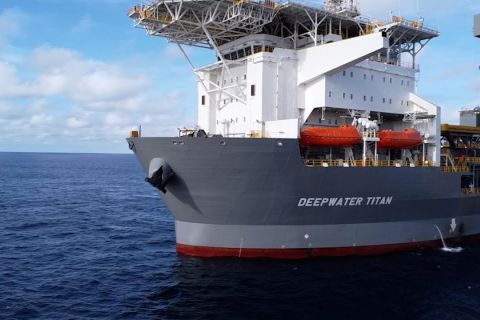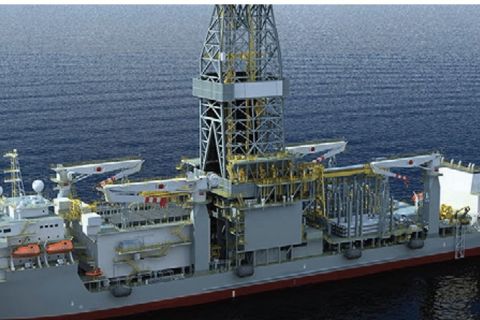Energy master limited partnerships (MLPs) booked impressive total returns in 2009 and 2010, especially relative to the broader markets. The asset class managed to extend this outperformance during the first quarter of 2011.
But, beginning in March, energy MLPs retreated and became significant laggards in the second quarter relative to other dividend-producing sectors, such as REITS and utilities, and to the wider energy complex and broader equities markets.
For the year, MLP unit prices are up by an average of 1.9%, compared to 7% gain for Standard & Poor’s 500 Index, with May being the worst month so far.
Underperformance factors
The recent underperformance stems from several factors. In addition to apparent profit-taking and market-wide risk-aversion, investors were also concerned that a recent U.S. Treasury study might lead to tax reform legislation that would affect the tax-advantaged status of pass-through entities such as MLPs.
Yet the Treasury report estimated that current MLP tax status costs the government about $500 million in annual tax revenue. Since this seems a modest figure, many analysts say that it is unlikely for MLPs to be the subject of significant legislation reforms, especially given the important role that MLPs play in this country’s energy infrastructure.
Research analysts at Wells Fargo suggested that another reason behind May’s MLP underperformance was that short-term investors purchased MLPs in April to collect the distribution payments and then sold the securities after the payment dates in May.
Subsector performance
On a subsector level, the best year-to-date performers on a total return basis, expressed in estimated percentages, have been the general partners (+26%), followed by the gathering and processing MLPs (+15%). The main detractors were refined product pipeline MLPs (+3%), long-haul natural gas pipelines (-3%) and propane and gas storage (-4%).
The general partners benefited from recent consolidation trends whereby limited partners have been buying back their general partners to lower their costs of capital and simplify their capital structures, while refined products pipeline MLPs were hurt by worries of demand destruction due to consumer conservation from high gasoline prices. However, the accumulation of oil supply at Cushing and subsequent disconnect between West Texas Intermediate and Gulf Coast crude oil prices has driven several potential pipeline projects designed to alleviate the bottlenecks and reduce the spread in regional prices.
Gathering and processing MLPs have experienced the most organic growth opportunities this year due to the acceleration of upstream drilling in liquids-rich basins. Reduced natural gas rig counts from the E&P community initially posed challenges for the gathering pipelines as natural gas volumes fell. However, these MLPs have benefited from their processing and fractionation assets amid strong natural gas liquids (NGLs) markets.
Liquids impacts
Even as crude oil prices fell 10% in May, NGL prices fell only 6%. The liquids were supported by continued robust demand for ethane and propane, which are used as feedstocks for petrochemical producers.
Investor concerns about oversupply in NGL inventories were mitigated upon announcements by three petrochemical companies of their plans to build new steam crackers on the U.S. Gulf Coast. Also, Royal Dutch Shell reported a plan to build a new world-scale ethylene cracker in the northeast, which would be fed by Marcellus shale ethane.
New projects
The volatility in U.S. commodity prices, especially as compared to their global counterparts, has influenced the capital allocation of the upstream companies, and the most financially flexible MLPs have been nimble enough to invest in the infrastructure that will capitalize on recent trends.
With the current record differential between crude oil and natural gas, and the attractive economics of NGLs, MLPs are building the infrastructure to transport growing liquids supplies from shales in the Bakken, Eagle Ford and Permian Basin. In May, Energy Transfer Partners LP and Regency Energy Partners LP announced plans to build a new 100,000 barrel per day fractionator in Mont Belvieu, Texas. Also, in early June, Regency announced a $425-million Eagle Ford shale gathering expansion.
While 2011 has been disappointing for MLP performance, a deeper dive suggests that the investment thesis that supported the staunch outperformance for the past two years remains intact. MLPs continue to access the equity capital markets, raising $1.2 billion in proceeds during May alone, to fund investments and they continue to raise their distributions.
Furthermore, the yield spreads on the new energy MLP debt issuances tightened, suggesting that the debt markets are accessible to the sector and that the cost of capital is coming down.
Three energy-MLP initial public offerings (IPO) have priced in 2011 and private money has continued to flow into the asset class with the IPO of a new MLP closed-end fund (Salient MLP & Energy Infrastructure Fund) and the launch of a new open-end mutual fund (Tortoise MLP & Pipeline Fund).
Additionally, four MLP closed-end funds have filed for IPOs for later this year. In a positive for investors, there are yet more ways that they can access the MLP space without a K-1.
Recommended Reading
Transocean Releases Fleet Status Report
2024-02-15 - Transocean’s total backlog for its fleet is approximately $9 billion.
Chouest Acquires ROV Company ROVOP to Expand Subsea Capabilities
2024-05-02 - With the acquisition of ROVOP, Chouest will have a fleet of more than 100 ROVs.
After 4Q Struggles, Transocean’s Upcycle Prediction Looks to Pay Off
2024-02-21 - As Transocean executives predicted during third-quarter earnings, the company is in the middle of an upcycle, with day rates and revenues reaching new heights.
TPH: Lower 48 to Shed Rigs Through 3Q Before Gas Plays Rebound
2024-03-13 - TPH&Co. analysis shows the Permian Basin will lose rigs near term, but as activity in gassy plays ticks up later this year, the Permian may be headed towards muted activity into 2025.
Valaris Updates Fleet Status
2024-02-19 - The backlog of these contracts and extensions is valued at $1.2 billion.





